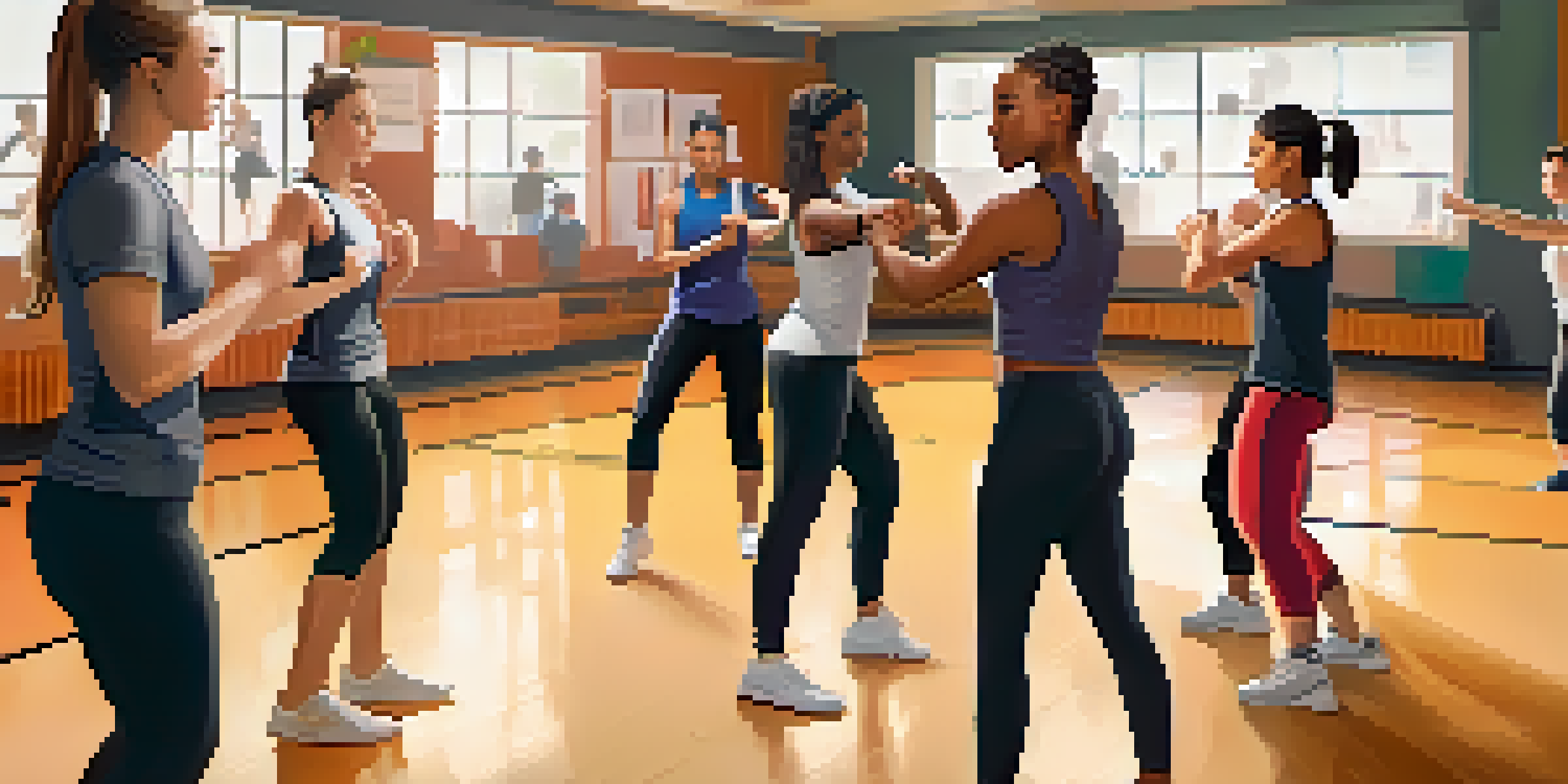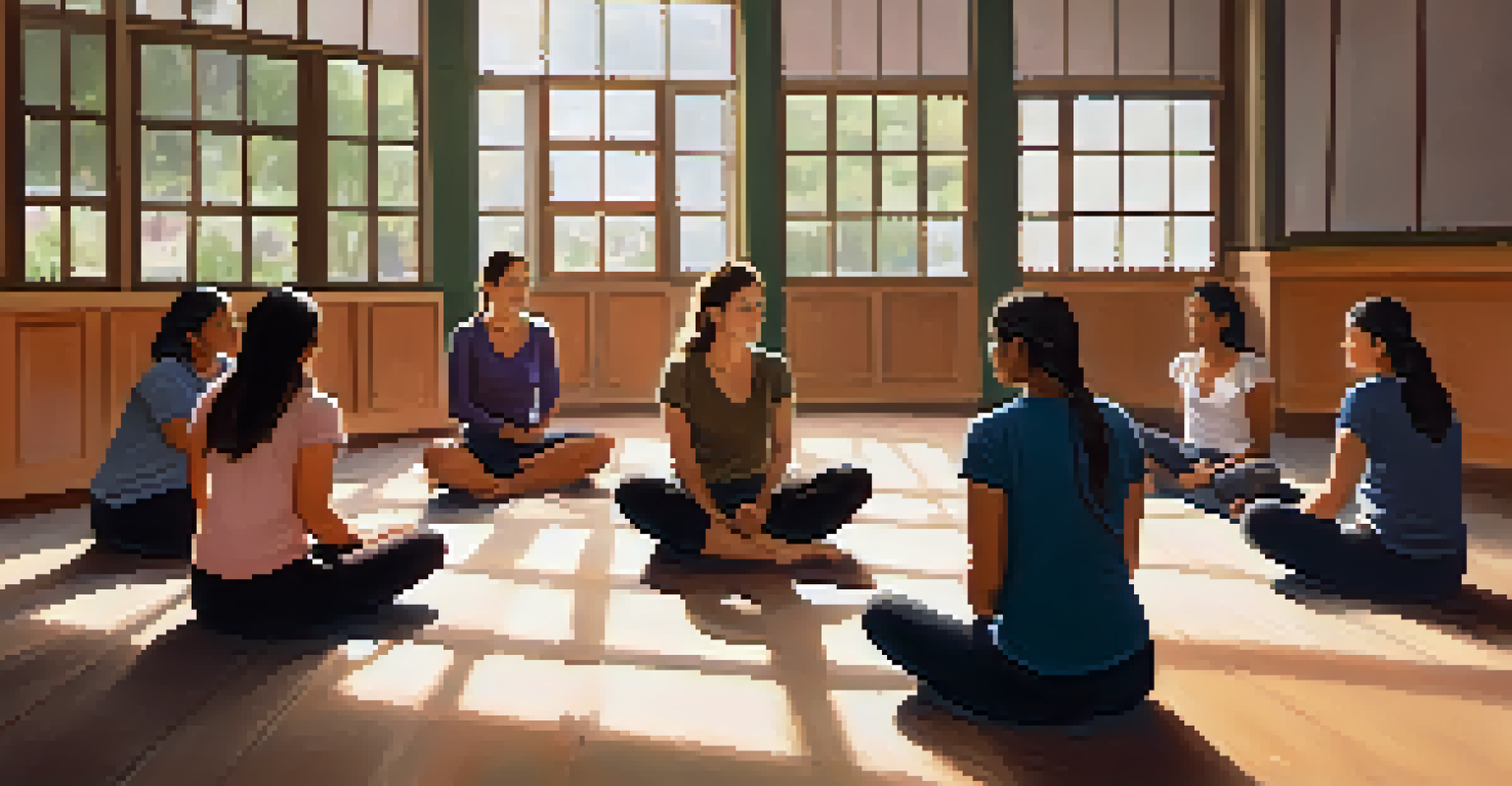Cultural Perspectives on Gender and Self Defense

Understanding Gender Roles in Various Cultures
Gender roles vary widely across cultures, influencing perceptions of masculinity and femininity. In some societies, traditional roles dictate that men are protectors, while women are seen as caregivers. This often shapes how individuals view self-defense, with men generally expected to learn combat skills and women often receiving less emphasis in this area. Understanding these norms is crucial to appreciate how they impact self-defense training and practices.
The most courageous act is still to think for yourself. Aloud.
For example, in many Western cultures, there’s a growing movement towards empowering women through self-defense programs. These initiatives challenge traditional views by promoting the idea that women can and should learn to protect themselves. In contrast, some cultures may still adhere to the belief that women should avoid confrontation, which can lead to a lack of resources for self-defense training. This highlights the importance of cultural context in shaping attitudes towards gender and self-defense.
Ultimately, the way societies construct gender roles directly influences not only who participates in self-defense training but also how effective these programs can be. Recognizing these cultural perspectives allows for a more inclusive approach to self-defense that respects and integrates diverse views.
The Impact of Culture on Self-Defense Training
Self-defense training is often tailored to fit cultural beliefs about gender. In cultures where women are traditionally seen as less capable of defending themselves, training programs may focus on avoidance and de-escalation tactics rather than physical confrontation. This can lead to a limited understanding of self-defense and its applications, potentially leaving individuals unprepared for real-world situations.

Conversely, in cultures that promote equality, self-defense training tends to be more comprehensive, addressing both physical techniques and mental preparedness for conflict. For instance, martial arts like Krav Maga or Brazilian Jiu-Jitsu emphasize empowerment and practical skills for all genders. This approach not only builds confidence but also fosters a sense of community among participants, regardless of gender.
Cultural Norms Shape Self-Defense
Gender roles and cultural beliefs significantly influence self-defense training and perceptions of capability.
Recognizing these differences in self-defense training can help instructors create more culturally sensitive programs. By integrating diverse perspectives, trainers can better prepare individuals to respond effectively to threats, ultimately promoting safety and empowerment across all genders.
Cultural Narratives Surrounding Gender and Violence
Cultural narratives play a significant role in shaping perceptions of gender and violence. Many societies perpetuate myths that portray men as inherently aggressive and women as inherently vulnerable. These stereotypes can influence how individuals approach self-defense, often leading women to feel less capable of defending themselves.
Empowerment is not about being better than others; it's about being better than you used to be.
In contrast, cultures that celebrate stories of strong female figures can inspire women to take up self-defense. For instance, the portrayal of women warriors in folklore or media can empower individuals to challenge the stereotype of passivity. This shift in narrative not only encourages women to engage in self-defense but also promotes a broader societal acceptance of women as capable defenders.
By understanding and reshaping these cultural narratives, we can encourage healthier views on gender and violence. This can lead to a more balanced approach to self-defense that empowers all individuals, regardless of gender, to take control of their safety.
Intersectionality: Gender, Culture, and Identity
Intersectionality considers how various aspects of a person's identity—such as race, ethnicity, and socioeconomic status—intersect with gender. This perspective is essential when discussing self-defense, as individuals from different backgrounds may face unique challenges and experiences. For example, marginalized groups might have different access to resources and training compared to their more privileged counterparts.
Moreover, the way self-defense is perceived can differ significantly among various cultural communities. A person from a background where self-defense is seen as necessary may approach training with a different mindset than someone from a culture that discourages physical confrontation. Acknowledging these differences is vital for creating inclusive self-defense programs that cater to the needs of diverse groups.
Intersectionality Matters in Training
Considering the intersection of gender, race, and socioeconomic status is crucial for inclusive self-defense programs.
Incorporating an intersectional approach allows self-defense instructors to better understand the varied experiences of their students. This understanding can lead to more effective training that not only equips individuals with skills but also fosters a sense of belonging and support within the self-defense community.
The Role of Community in Self-Defense Empowerment
Community plays a crucial role in shaping attitudes towards self-defense and gender. In many cultures, communal support can empower individuals to learn self-defense skills and challenge existing gender norms. For example, women-only self-defense classes can create a safe space for participants to share their experiences and build confidence together.
Additionally, communities that prioritize safety and empowerment often see a greater interest in self-defense training. When members rally around the idea that everyone deserves to feel safe, it fosters a culture where self-defense is viewed as a necessary and valuable skill. This collective mindset encourages individuals to seek out training and support one another in their journeys.
Ultimately, a strong community can help dismantle the barriers that prevent individuals from pursuing self-defense. By fostering an environment that values safety and empowerment, communities can contribute to a healthier dialogue around gender and self-defense.
Media Influence on Gender and Self-Defense Perceptions
Media representation significantly affects public perceptions of gender and self-defense. Movies, television, and social media often portray women as victims or men as aggressors, reinforcing harmful stereotypes. However, when media showcases strong, capable women who defend themselves, it can inspire real-world change and encourage others to learn self-defense.
For instance, action films featuring female protagonists who use self-defense skills can challenge traditional gender norms. These portrayals demonstrate that women can be both strong and capable, which may motivate viewers to engage in self-defense training. As audiences increasingly demand diverse and empowering representations, media has the potential to reshape cultural narratives around gender and self-defense.
Community Empowers Self-Defense Skills
A supportive community can enhance individuals' confidence and commitment to learning self-defense techniques.
By critically analyzing media portrayals, individuals can become more aware of the messages being conveyed about gender roles and violence. This awareness can inspire discussions that promote healthier attitudes towards self-defense and empower people to take action in their lives.
Future Directions for Gender and Self-Defense Training
As society evolves, so too must our approaches to self-defense training. The future of self-defense programs should emphasize inclusivity, recognizing that individuals from all genders and backgrounds deserve access to effective training. By incorporating diverse perspectives and experiences, instructors can create a more holistic approach to self-defense that benefits everyone.
Additionally, there is a growing need for self-defense programs to address mental and emotional preparedness alongside physical skills. Teaching individuals how to manage fear, anxiety, and situational awareness can empower them to respond effectively in high-pressure situations. This comprehensive training approach can lead to greater confidence and a sense of control over one’s safety.

In summary, the future of gender and self-defense training lies in embracing diversity and fostering empowerment. By understanding cultural perspectives and adapting training methods accordingly, we can create a safer and more inclusive environment for all.